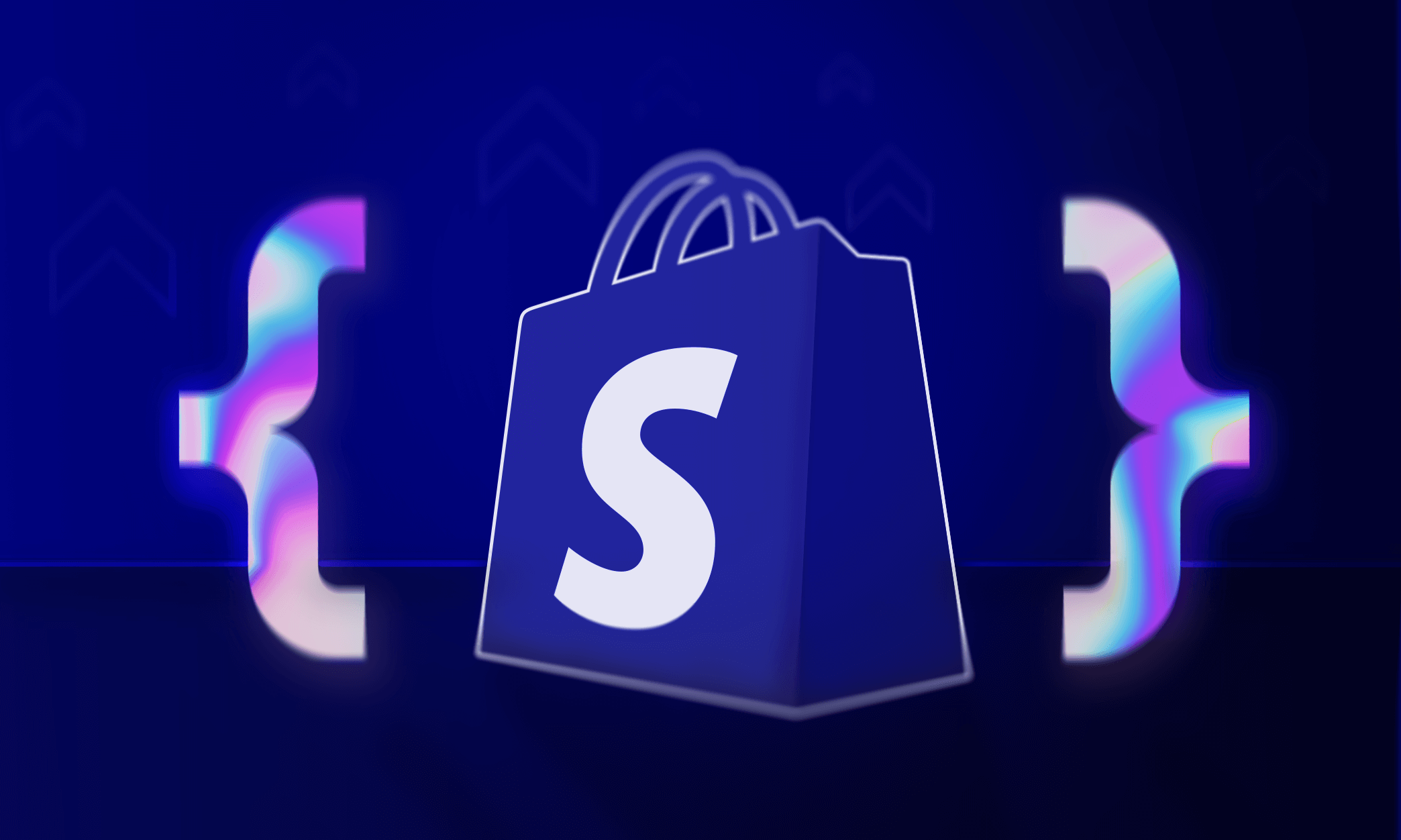Digital Marketplace Development Guide
How To Start Online Marketplace Business in 2023?
No matter the times or the products, the key to success was always delivering the right product or service to the people willing to buy it - trite but true. Traditionally, it was up to the merchant to seek the customer. Modern business models provide tools that simplify and quicken the process by providing a suitable platform - an online marketplace.
WHO IS THIS GUIDE FOR?
This guide was created for every entrepreneur, be that an aspiring or a seasoned one, that considers launching their own marketplace.
Building one can serve multiple purposes, including:
being a supporting source of income
being a main source of income as an off-shoot of the other activity
being the only business to run
being a platform that gathers a community to be further monetized
WHAT WILL YOU FIND IN THIS GUIDE?
This guide is a comprehensive source of knowledge on the marketplaces, starting from basics and providing answers for most to all questions regarding the model, including:
How to build a digital marketplace in 2023?
How to earn with the marketplace?
What are the most common (and not only) types of marketplaces?
How to grow and scale the online marketplace?
How to evaluate the business idea and model?
What is the future of the digital marketplace business model?
The guide was delivered by Ideamotive’s experts on monetization, development and business models. To get all this knowledge click the button below or read further!
By clicking “Get the e-book” you consent to processing your data by Ideamotive Sp. z o. o. for marketing purposes, including email marketing.

Let’s get started!
.png)
Thinking about building your own marketplace?
Talk to one of our industry advisors. We'll help you select the right technology, build a product roadmap and put together an A-class team.
Table of Contents
01 Marketplaces 101 - What Is It About?
A top-of-mind example of an online marketplace is probably a large B2C e-commerce site with numerous vendors providing countless goods for a large base of customers. A model similar to the offline marketplace, where vendors providing anything from groceries to consumer electronics meet their clients.
But when it comes to a digital business, that's usually not the case.
What is a marketplace model?
The most common approach toward e-commerce is to operate a traditional shop. It sends the goods from a warehouse, keeps them in stock and, depending on the whole business model, buys them from a wholesaler or produces them on his or her own.
Yet e-commerce comes with multiple alternative business models that challenge traditional ways of doing retail business. Sometimes the challenge is only on transferring a proven and effective business model on-line. That’s exactly the case of a marketplace. To make the matter more clear, we decided to prepare a comprehensive marketplace guide.
The multi-vendor marketplace platform assumes that the owner has no own goods, or at least they are not a central point. The service is basically a… well… marketplace, where merchants can sell their own goods, leveraging access to a good location. Or service with high and well-profiled traffic in this case.
Digital Marketplaces can take numerous forms and come with different offerings. Among the most well known there are:

eBay
Probably the first successful online marketplace with 24 country-specific websites. The marketplace is known to sell everything - from used furniture and second-hand clothes to exotic from all around the world. eBay is one of the methuselahs of the internet. It was established in 1995 and came a long way, from a simple platform to sell used goods to its peak of popularity in the 2000s.

Udemy
A counter-intuitive example of the educational marketplace, where every author can share his or her knowledge on a chosen topic, be that business, programming or copywriting. Contrary to a popular Khan Academy, Udemy focuses on adult students and professionals who wish to broaden the knowledge useful in their careers or personal development. As of 2019, there are over 130,000 courses available on the website.

Aliexpress
Operated by Chinese online commerce mogul Alibaba, Aliexpress is one of the gates that open the world of Chinese goods to western consumers. According to various estimations, the company is predicted to gain up to $15 billion with IPO, dwarfing Uber, a current record holder. Aliexpress is known for its versatility and adaptability. And an endless amount of counterfeit goods.

Shutterstock
A marketplace for stock images that are used in countless business projects around the world. The marketplace provides images for nearly any topic available, from business to healthcare to parenting and dating. In fact, Shutterstock is the first choice when it comes to stock photos and images. The company is currently worth $2.5 billion in market value.
Apart from wide and narrow marketplaces, there are also local and global ones. The examples above show those accessible from all around the world, while there are multiple existing only regionally or locally.

Allegro
The biggest polish marketplace that posed an unexpected challenge for eBay. The international giant was unable to force Allegro out of the market and eBay remains unpopular.

Americanas
Brazil’s leading marketplace platform with over 500,000 products and 10 million customers.

Jumia
The largest African marketplace, selling basically everything from soap to consumer electronics. It operates in 14 countries, serving over 1,2 billion customers served by 50,000 sellers (and that’s not a mistake - there really are so little merchants and such a big base).

MyDeal
Australian marketplace that comes with the unique feature of product quality check applied to merchants before they enter the platform. On most of the marketplaces comments and ratings are the tools to spot untrustworthy sellers, white MyDeal performs first-line checks on its own.
Advantages of marketplace model over typical e-commerce
Marketplaces come with numerous advantages unseen among traditional e-commerce business, even if there are several challenges unseen anywhere else.
What are they?
-
Much easier logistics
With a traditional online shop, companies are responsible for all logistics chains to control, maintain and optimize. Typical internet retailer provides end-to-end experience, from ordering the stock to deliver it straight to the customer’s door. The number of unexpected events on the go can be groundbreaking, and for each and every shop needs to take responsibility. So if the delivery man damages or skips the package, the responsibility is in the shop.
Marketplace, on the other hand, provides a platform with verified mechanisms that enable single merchants to sell goods they have. The rest of the process - the manufacturing, stocking, and fulfillment, is totally out of the marketplace’s competence. What’s more, many marketplaces use the deposit system to support security in their transactions. So if any aspect of the transaction comes off-road, the user can be more assured of getting money back than if shopping in a traditional store. -
Multiple ways to earn money
For a traditional shop, the key is to get the users and convert them. The shop owner pays for everything - from user acquisition to the cost of customer service.
A marketplace can benefit from multiple ways to earn money. First of all, there are commissions, that can differ and provide the merchant with more functionalities of the platform. But not only. The platform provider can let the merchant pay for better exposition on the site, delivering, in fact, an in-marketplace ads system. In this model, the platform earns money twice - once for ad and a commission. -
The marketplace can benefit from the scale,
so making any deals with logistics providers can be a lot easier. Also, when the marketplace provider supports buyers and sellers with logistics options, it is seen as customer excellence, not a must-have.
-
Finally, the marketplace enjoys a snowball effect,
with growing traffic attracting more merchants and providers while keeping logistics costs at the bay.
Marketplace business model vs. Aggregator business model
The aggregator can be seen similar to a digital marketplace, yet it comes with numerous differences that make it a harder type of business.
In the core of the aggregator’s businfess model is delivering an additional service to the user, that would make it necessary - the most popular type is the price comparison. So the first challenge is to provide the service that fits the niche. But that’s only the tip of an iceberg
-
The rules need to be transparent - the aggregator needs to display offers in some order - and the order has to be clear for the user.
-
The aggregator needs to earn - the most common way to earn money as an aggregator is to compare prices. The owner needs to keep a fragile balance between providing a fair comparison and selling a better exposition of the offer. If the customers find that the aggregator focuses too much on selling ads to the shop owners (and less on comparing prices) they will abandon it.
-
Aggregator business is attractive for Google - Any business that is attractive for Google will face disruption and turmoil in the near future.
The network effect
The marketplace comes with a network effect, that makes the business more robust and stable. Marketplaces with an established position on the internet market seem to be less prone to new challenges, as the customers are just used to them. That was basically the case of Allegro, which proved to be robust enough to overcome the challenge of eBay invading the Polish market. But not only.
A good example comes from ClassPass and FitMob, two marketplaces competing on the fitness and gym market. Both companies were expanding city-by-city and when trying to clash, they found that it is extremely hard to get attention in the city when the competitive service is available.
So the marketplace business, while harder to grow, is also even harder to fall. Think about eBay - it is still a strong player on the market, surviving numerous crises (be that 2008 one) and a famed dot.com bubble that literally obliterated most of the promising internet companies (it was before the startup era).
See also:
02 Marketplaces Ecosystem: Types Of Marketplaces And Real-Life Examples
The introduction was focused on the B2C retail marketplace market, but in fact, the marketplace model is getting more popular with the sharing economy. Uber or Airbnb are next mutations of a marketplace model tailored to serve new needs and new clients.
According to the World Economic Forum marketplace-based sharing economy benefits the world in numerous ways, with providing new tools of earning for minorities or people disregarded earlier. Surprisingly, one of the strongest enthusiasts of sharing economy (and marketplaces at the same time) is a Chinese Government, that aims to share economy to account for 10% of national GDP in 2020. That’s five times more than China spend on their military.
That’s a big thing, undoubtedly. But it requires multiple types of marketplaces to support various business models and operations. Also, there is a need for a great deal of flexibility to tailor a B2B or B2C marketplace to the needs of a particular industry. In fact, there are multiple models of marketplace operations.
Horizontal Marketplaces
Horizontal marketplaces aim to provide wide service or goods in a particular model. Big retailers like Tesco or Walmart in the offline world are good examples. Aliexpress, Allegro or eBay are typical horizontal marketplaces.
-
B2B marketplace - that’s the place where companies can find supplies and services they need. Contrary to B2C marketplaces, this one offers bulk and wholesale options. So that’s the place where coffee is cheaper - unless you don’t buy less than 10 kilograms.
Example: Alibaba - the mother company of Aliexpress and a Chinese internet behemoth is basically a B2B horizontal marketplace. -
B2C - that’s where individuals can buy basically anything. It is the most popular type of marketplace by far, leveraging the sole bases of e-commerce - great traffic and an astonishing customer base.
Example: Aliexpress - an internet marketplace with basically anything one can imagine (and far beyond). -
C2C marketplace - a place where individuals can sell their used (or new sometimes) goods to other individuals.
Example: OLX - the international bulletin board owned by South Africa-based media mogul Naspers -
B2B2C marketplace - a quite uncommon yet interesting way of doing business, where the B2B company is building the marketplace where it promotes its B2C partners, supporting their business and thus improving own. Usually, the B2B company is the largest player while partners are too small and fragmented to launch a venture together.
Example: Inter Cars, car parts, and mechanical equipment wholesaler launched “find a workshop” portal, where the user gets access to all the partnering workshops along with the ratings and a description.
Vertical Marketplaces
Contrary to horizontal marketplaces, vertical ones focus on one particular target, branch or industry to better fit its needs and provide higher quality tailored services. When it comes to horizontal marketplaces, there is new business models flourishing in the sharing economy niche.
Horizontal marketplaces are usually all about the goods to be traded. Vertical ones, on the contrary, are usually focused on one aspect, service or niche. The vertical marketplace model is getting more common when it comes to launching new startups or ventures. There are numerous examples:
Transportation Services
Companies are always in need of transport, be that documents, cargo or personal. Marketplaces are gathering the service providers and look for the best offer - that is not always a price.
Example: Uber. That’s basically a marketplace of taxi drivers.
Marketplace For Professional Services And Skills
Companies are always in need of some missing skills, be that a marketing specialist, a graphic designer or a writer. A marketplace of skills is comparable to bulletin board grouping freelancers or companies, with one significant difference. The marketplace is in charge of transferring money and all tax-related services. So hiring an offshore freelancer is much easier if done via marketplace than directly.
Example: Mediatask is a marketplace for architects and craftsmen working for a real estate business. A similar concept is represented by Fasadio.
Short Term Accommodation
Booking.com gathers numerous traditional hotels and rooms to rent. But that’s not all the market can give. By gaining traffic, marketplaces encourage new players to participate in the market and provide new services. So the marketplace with houses for rent is more common than it would appear at first glance.
Example: Airbnb - by enabling thousands of real estate owners to rent it in the short term, the marketplace literally disrupted all the hotel-based market. The impact of the company is so significant, that Los Angeles, New York, and Amsterdam among others decided to ban the service.
Fashion Marketplace
Fashion is a business like no other, especially considering the internal paradox. Everyone needs to follow fashion while craving to look unique. Considering that, finding truly original yet fashionable clothes is a challenge and marketplaces are a way to spot a talented designer to buy clothes from.
Example: Carnet de Mode is a Paris-based international fashion marketplace. Headquartered in word’s fashion capital the marketplace provides customers with offers from multiple designers who claim to feel trends in the city. On the other hand, Accompany focuses on delivering fair trade clothes and giving the buyer to support charities with every purchase, delivering a truly unique feel and strong brand message.
Cars Marketplace
The most obvious way to leverage the marketplace is the automotive business is to offer a place where people are willing to buy a used car can meet sellers. But delivering an obvious solution is not the point when it comes to building the next unicorn. Thus, numerous vertical and specialized car marketplaces flourish.
Example: buying a classic car is not only a fancy and expensive hobby - it appears to be a great alternative investment, as the aged cars usually increase only their value. Classic Trader is a place where only truly unique oldtimers can be found, including the pre-war models. So if one ever dreamed to roll like Arthur Conan Doyle or J. R. R. Tolkien, that’s the place to buy a ride.
Healthcare Marketplace
In healthcare, marketplaces provide both services and supplies. Depending on healthcare, yet the most common and popular one is the healthcare insurance marketplace run by the United States Government. The website allows users to compare and choose healthcare insurance - unlike most of the European countries, the US doesn’t provide common and state-funded healthcare.
Travel Marketplace
When thinking about the travel marketplace, it is common to associate it with the search engine for the cheapest offers. But not anymore. With the rise of vertical and narrow marketplaces, a travel business can benefit from various new models.
Example: Travelduck is a multi-vendor adventure travel marketplace, where the user can search for non-standard and totally non-boring trips. Diving with sharks? No problem. Race through the Sahara desert on bikes? That’s it!
Agriculture B2B Marketplace
Agriculture is a business like any other, so the companies provide marketplaces to fulfill the needs of the target group. There are numerous examples selling anything that can be needed in the business - from seeds and fertilizers to machines to natural means of maintaining organic food production.
Example: AgriMarketplace is a place where the organic and fair trade food producers can sell their produce to the factories. By shortening the delivery chain the producers can get higher margins and factories buy at a lower price at the same time.
Recruitment Marketplace
In the middle of the war for talent and increasing dependency on individuals with unique knowledge in the modern economy, employing the latest technologies in the recruitment process is a must. It can come in many forms - from horizontal multi-industry job posting moguls like indeed to more narrow places dedicated to a particular industry or backed by an interesting concept.
Example: It is no big deal when trying to hire a candidate who actively looks for a job. A challenge comes in cherry-picking someone who is satisfied with his or her job, yet poses unique skills. Scout is a marketplace that fits the companies with a particular, narrow need with a headhunter who is most likely to hire a fitting candidate - the whole process is supervised by the machine learning-powered tools.
Furniture And Handmade Goods
Contrary to the fashion industry, home appliances are not that trend-reliant. It is harder to redesign all the interiors to make them fashionable - at least that’s harder than buying new clothes. On the other hand, accessories enable owners to quickly refresh the interiors by changing a mood or dominant color. Considering that, it is not a surprise that handmade home appliances are on the rise.
Example: Etsy is the Scarborough Fair for handmade goods and the first choice of every artisan willing to sell his or her goods on the internet.
Marketplace For Innovative Ideas
With the revolution of crowdfunding, it is getting more common to raise the funds not by seeking the institutional investor or a business angel, but rather by presenting the idea to the internet users and seeking their support. Numerous products and games gained attention this way.
Example: Kickstarter is basically a marketplace for innovative ideas.
Literally Anything
The nature of vertical marketplaces imposes that there are countless industries, branches, and communities that have their own marketplaces, serving their needs and supporting niche suppliers in delivering goods. Vegan foods? Marketplace with cars? No problem. Carbon-neutral clothing? No problem. Fairtrade goods? Here you are.
Example: there are countless!
Alternative marketplace models
Managed marketplaces - the managed marketplace is way beyond the traditional model of connecting a merchant with a client. Managed marketplace provides an additional service that makes the transaction more attractive for both parties. By adding managed services the company can create new demand by reaching customers that were not in the target group or rising a trust level in the transaction.
Example: Beepi is a peer-to-peer car buying and selling marketplace, that gives the seller guarantee, that it will buy the car if no one else buys it within 30 days.
Community driven marketplaces - this is the situation when the marketplace is something more than a place to exchange items - it delivers a sense of community for participants. Considering that, the marketplace gives users something more than a typical shop - it is more like an online club, where nice and cool people can be met.
Example: Etsy is a marketplace built around artists and strongly supports building circles and clubs. To some extent, DeviantArt can be considered a community-driven marketplace, as the community of photographers and artists was the first step and the possibility to buy high-quality photos and prints came later.
SaaS-enabled marketplace - in the core of the marketplace business is building high traffic that can be further monetized in the form of commissions or other payments. With the explosion of cloud and Software as a Service, some companies gather the traffic by delivering a free SaaS software and supporting their clients with a marketplace of possible solutions from partners, To some extent, the model is comparable with open source software like Magento or Wordpress, where the company offers implementation and paid plugins to enrich the software’s functions. In fact, official Magento’s plugin marketplace is available and it works well.
Example: Zenefits delivers free HR tools and earns money whenever the users buy any additional service from any insurance partner.
See also:
03 What do you need before starting your own marketplace?
As stated above, a marketplace is a good way to build own online business that differs from the dominant model. Yet it shouldn’t be assumed, that it is a universal receipt for online business success. As in every case, launching own marketplace should be preceded by careful analysis and heavy thinking, as it is neither easy nor cheap.
Validate the idea
The idea is usually the moment when the business is born. In the case of the marketplace, the best way is to find the need that remains unfulfilled and deliver an easy way to serve it. So when thinking about what is a marketplace plan one should ask at least a couple of steps:
Search it!
“So I have a great idea of international marketplace selling artisan goods and craftsmanship. My idea is to enable small artists to reach the audience and provide people with unique goods”
That’s Etsy. Sometimes an idea seems unique only due to lack of research. If exactly the same marketplace already exists, a chance for success dramatically drop (see the Network Effect)
Ask for feedback
It is tempting to hold a precious idea in the Gollum manner, yet it is not the key to victory (again Gollum comes as an example). Before launching own marketplace one should ask mentors, peers or family on their opinions. The same goes for potential customers - what do they think of the idea?
Examine the customer base
Are customers really that numerous or is that only a biased view? Is the estimated cost acceptable for them? How will they get to know about the service and the marketplace?
If the answers show that the idea is good, fresh and provides interesting possibilities, a further business analysis should be conducted. When it comes to gathering business data, the marketplace is no different - the more, the better.
SWOT analysis
SWOT is an established and renowned business analysis technique. The acronym stands for:
| Strengths | Weaknesses | Opportunities | Threats |
| what are strong points in the idea and the business to be built in the near future. | what are the downsides and possible challenges. If there are no - the analysis is undoubtedly flawed. | the outside business aspects that can impact the company in a positive way, be that any fashion or increasing trend for the marketplace’s offer. |
the outside aspects that can affect the business negatively. Competition, market trends or possible legal changes (just think about GDPR) are common examples. |
Research your competition and the market
The next step of validating the idea is to examine the competition and the market. Although it is not impossible to succeed in the already crowded market by delivering a better experience and customer excellence, marketplaces are much harder to compete (network effect again).
So if the market is big enough to feed multiple marketplaces and the competition is not impossible to outrun, there is the last (but not least!) aspect to think about:
How the marketplace will make money?
That’s the main purpose of the business - to make money. Before that, we can help you with estimating the cost.
There are at least several ways to earn money as a marketplace:
-
Commissions - a flat fee or a percentage of a transaction.
-
Ads - a merchant can pay to get the better exposition on the main page.
-
Fees - a merchant can pay for numerous services provided by the marketplace.
More on the matter is written in chapter six.
Secure the financing!
An online marketplace is a great way to build an online business. But it is no different than any other - it is not probable to make it self-financing during the first few weeks if not months. Considering that, it is crucial to secure the financing and estimate the minimal costs of operations. At this step the company needs to include:
-
Hosting and operations costs
The brick and mortar of online business, crucial to keep the business on-line. Without securing the support of the platform operations it is not possible to keep going.
-
The merchant acquisition
There is no marketplace without sellers, so the company or an individual willing to launch own platform needs to get access to merchants and encourage them to sell on the platform. There are various ways to do that - from advertising to personal reach to content marketing, yet all of them require money.
-
Customer acquisition
the other side of the coin - there is no marketplace without buyers. Reaching them is comparable to reaching to merchants - yet there are other channels and tools to do so.
In the most comfortable scenario, the company or the owner has enough money to support the side business - and that’s neither impossible nor rare. It is increasingly common to launch the marketplace.
-
Amazon launched its own marketplace backed by fulfillment services. The largest e-tailer in the world is fully operational without its marketplace, yet it helps the company to gain more of the market. And maybe, by the time, swallow the world’s e-commerce.
-
Leveraging its own working business is also a strategy behind Walmart’s own marketplace.
Another way to gain capital for launching your own marketplace is to get investors and business angels. Yet the owner needs to keep in mind that he or she is going to share owned business. And that’s sometimes not the thing that one desires.
04 How to build a marketplace? (and where to start?)
When launching your own marketplace, you don’t need to start from scratch. A marketplace is an increasingly popular business model, so it is nothing surprising in the increasing number of ready-to-go software with cherry-picked interesting and efficient ones depicted below:

Magento
The most popular open-source e-commerce platform can deliver a relatively good base to build own marketplace - all with the power of plugins and extensions. The main advantage of the solution is the familiar base and using open source solutions, perceived as easier to maintain osnes. On the other hand, building a custom marketplace with Magento is everything but easy - the marketplace was not a purpose for this software was built.

WooCommerce
An e-commerce extension of WordPress can also deliver a good base for the online marketplace, as long as the owner will not deliver anything fancier than a marketplace webshop. It is possible, yet it is rarely worth it.

Shopify
The world’s most popular commercial e-commerce platform supports also a set of solutions to support building a marketplace. Contrary to the open-source above, Shopify offers verified and updated set of plugins, extensions, and backs it with the customer support team. On the other hand, it is significantly more expensive than the open-source solution.

Cocorico
In the age of Fiverr or Uber, selling services online is nothing special. Thus, dedicated software is already available. Cocorico is a service-oriented marketplace software designed far from classic e-tailing solutions offering multiple products from one vendor.

Yo!Kart
A solution strictly designed to deliver a multi-vendor marketplace with a high concentration on user experience.

Mirakl
The company behind Mirakl focuses on the smoothness of the process, aiming to deliver a digital one-stop-shop when it comes to online shopping.

Prestashop
The solution can be modified in the same manner as Magento, with a dedicated system of plugins and extensions.

Sharetribe
A solution that focuses on the ease of usage, be that client-side, vendor side or the owner's side. The company delivers its software in two versions - a ready-to-go one and a flexible one, that can be adjusted to support different goals.
All the solutions above are enough to support most business cases out there in a better or worse way. Companies delivering these solutions focus on getting as much client base as possible, so products are versatile, yet with no support for niche or specific needs.
Thus, the most popular marketplaces in the world that are known as unicorns use custom software that supports the unique needs of the owner.

Uber
Includes a timing software, GPS tracker and many other solutions that support the overall functioning of the platform. So being a marketplace as it’s core, Uber is, in fact, a giant piece of custom software.

Kickstarter
Needs to work with multiple supporters of projects and process the steps of support. Also, the company needs to keep its finances safe and make the supporting process as transparent as possible.
Every company is different. Unicorns are no exception. And with the scale comes customization. If the idea is unique, the best way is to test it with a Minimal Viable Product.
What is Marketplace MVP?
If the idea is too big or too bold to fit a standard software, it is highly advised to deliver a Minimal Viable Product (or platform, to be precise). The core idea of building an MVP is to show and test the idea - but only in a closed circle of visioners able to see what’s beyond a sturdy form.
When delivering any product or IT project, it is not only about delivering functions. A good MVP shares a bit of functionalities, design, vision and overall feeling of the final product to be delivered.
Delivering an MVP is not only a way to show and share a vision of a product, yet the product itself is no mere finished. Delivering a vision by the MVP usually involves:
-
An offer for a vendor - that includes basic slice of functionalities to get and ways to deliver them.
-
An offer for a customer - that includes the promise of the product she or he gets when using the marketplace.
-
A vision of the creator - the overall product includes a brand and brand promise, the proof that the concept itself will work and more than a hint on the competitive advantage.
Example:
Uber MVP would include:
-
A process of ordering a driver - to show what is a brand promise and the main product of the marketplace
-
A system of rating - to give an example of competitive advantage and give a hint on solving the basic problems of security and building trust
-
Basics for fee counting system - to show the offer for vendors and deliver the reason to sell the services
Uber could have not delivered many functionalities in the MVP, including tipping the driver or contacting the customer service. Delivering customer service is not the tool to build a competitive advantage in the case of Uber, so at the stage of MVP, it is not required.
How to design the marketplace?
When it comes to design, a marketplace is not that different from traditional e-commerce. There are several components shared with the typical store like:
-
A product page
-
An overview page of the offer
-
Cart and checkout
-
User’s profile (a customer’s one)
But contrary to the traditional e-store, the marketplace comes with at least one additional panel - a merchant’s panel, that enables a seller to post his or her offer on the marketplace without the need for support from the owner. Thus, the marketplace owner needs to map both the journey of the seller and one of the end-customers.
Considering that, the marketplace needs to employ several elements of good design:
-
Enable the sellers to provide good quality photos - or even force them to. It can be a good idea to prohibit posting an offer without at least one photo (if corresponding)
-
Encourage good descriptions - sellers may not be as educated as the marketplace owner wills them to be. Yet a good product description is the key to building trust. So the owner can both deliver educational materials via blog or newsletter or impose an upper and lower limit of the description length
Delivering a great UX is all about understanding the target group. It can be achieved only by following principles of data-driven marketplace business. Thus, the owner needs to:
-
Perform extensive and ongoing A/B testing - there's always room for improvement and when it comes to UX, A/B testing is one of the most powerful tools to use.
-
Ask for feedback. All the time - most consumers and users abandon the site they find not useful. When asking about the reason for leaving, the company can gain qualitative data to support the optimization process.
In fact, there are only three ways for a similar marketplace to compete against each other:
-
Developing a better product - in the terms of marketplaces it is basically all about the user experience delivered. When entering the market the company can make the app more convenient, the website more usable and the overall process easier and with less friction.
-
Providing lower costs - the strategy is a good pick in the short term, yet it suffocates the business in the long term. Cutting the margin lefts the marketplace with no cash for development or marketing to further build the position on the market.
-
Unique inventory - that’s the best strategy possible (apart from delivering a great UX), yet the hardest to execute. Providing unique inventory is usually possible only if the marketplace is the first one on the market. Yet there is always a competition growing fast, so being a monopolist is usually impossible in the long term.
Considering all the above, delivering outstanding UX is the only way for the marketplace to build a stable competitive advantage over time without losing profits or hard-cutting the costs. Also, with the network effect and the social proof, the great UX hardens the position of the marketplace and makes it even harder to overtake by the competition.
Finally, the bigger the marketplace, the more traffic it attracts and can gather more valuable data on the customer journey and behavior. Thus, constant collecting insights and improving the platform gets easier over time. with faster feedback and a bigger scale of operations.
05 Growing, scaling & maintaining the marketplace
Building the marketplace is only a first step toward greatness. The hard part is growing it, especially when one is tight on the budget. But it is not impossible when following certain rules. Most of them being rather intuitive and common sense based than any kind of arcane business knowledge.
Growing the marketplace
The marketplace is all about building the reach and providing traffic. Thus starting as a no-name brand will be hard. But that’s not necessary.
The first step in successfully growing the marketplace is designing a system that will motivate both sides, be that a merchant and a client, to use the platform for their own benefit. When considering the modern marketplaces, the mechanisms of delivering the added value is visible at first glance.
| Marketplace | Advantage for customer | Advantage for supplier |
| Uber | Low price, easy payments, a summary invoice at the end of the month | Low-to-none entry barrier, a massive supply of customers |
| Udemy | Lifetime access, convenient ways to participate in courses (apps, browser, etc.) | Convenient payments, motivation to gather the users on own sake |
| Fiverr | Thousands of freelancers to reach from all around the world, multiple options of price vs. quality, easy way to make payments | Large client base, transparent rules of payment, access to clients from all around the world, a single entity to deal when it comes to accounting |
| Useme | Access to low-price freelancers with no sole proprietorship | Ability to provide a VAT invoice without need to launch a sole proprietorship |
So apart delivering the meeting place, a marketplace provides also an additional service that fulfills the need of both the supplier and the client. Without that it is impossible to attract the target group - it will use existing solutions like Craigslist, Facebook, OLX bulletin board or anything else convenient - you name it. But name it carefully, because that is how to get vendors on the marketplace.
The next step in growing the marketplace is reaching potential users and providing them information on the advantages of a newly launched platform. To do that, it is crucial to map both the suppliers and the customers and identify the points when there is a great supply of them.
Examples:
| Marketplace | Suppliers | Customers | Hubs |
| Uber | Car owners with no full-time job, professional drivers | Business people who need convenient payments, tourists | Conferences, hotels, traffic hubs |
| Udemy | Academy teachers, business trainers, experts | Students, professionals willing to gain new skills | Universities, libraries, internet expert forums, LinkedIn |
With the base gathered, the marketplace owner need to prove, that the platform solves the needs and reach the clients with the messages, The needs to fulfill are:
-
Earning more money - a pretty obvious one.
-
Saving time - the time is money as well. Finding a reliable supplier or a trustworthy taxi driver is as good a gain as the hard cash.
-
Automating processes - endless email forwarding circles or establishing numerous meetings and calls only to ensure the daily operations is a real thorn is aside. Providing a solution that automates business processes is a thing worth considering.
-
Reliability - another advantage the users are willing to pay for. Being sure that the service will be delivered on time can be a business game-changer.
Scaling up the marketplace
Scaling the growing marketplace is not only about providing “more of the same”. Depending on the type of the marketplace (vertical or horizontal, B2B or B2C, etc.) scaling the business can mean building a new branch or changing the core operations to better fit the market needs.
Example:
Uber - Apart from providing transportation services, Uber leveraged existing know-how and technology to build a food delivery service - Uber Eats.
Marketplaces usually start locally to build a renowned position in the niche they sprouted from. But this environment has a limited capacity and can be limiting for the ambitious business. So the next way to scale up the business is to enter new markets, be that local ones or international ones.
Example:
Polish marketplace Allegro entered the Czech market as Aukro platform.
What to do to scale up the marketplace?
Ensure the safety of transactions - fraud is a great danger for all online businesses and marketplaces are no different. The key threat is in the nature of services delivered by the marketplace - think about Airbnb or Uber - the driver or a landlord can not only steal money but also be a dangerous man. So for the marketplace, it is crucial to build trust between the merchant and the customer and act as a policeman-in-between, as both sides can play unfair. One of the most effective ways to do so is to establish a system of user reviews and stars that enable the user to rate the place or a vendor.
Support power sellers - on every platform there are top-performers delivering multiple advantages with their work. Typically those sellers deliver customer delight and excellence on the level unseen before. Those sellers are usually ones that can earn a living from the marketplace and considering that they are social proofs and success stories in one, that can be shown as an example. To support them, the marketplace can:
-
Give them a “super-premium” account - that can deliver additional promotional tools or ensure a special exposition in the “top sellers” section.
-
Build an audience around them - a company can invest PR and marketing efforts to tell the story of the top seller. Any arranged interview or a “success story” blog post that can serve both as an advertisement and an educational tool is a great way to promote a particular vendor.
-
Encourage them to join the company - any company can benefit from a brand ambassador. so building a network of those is a great idea. The seller can find getting additional cash from training others or delivering knowledge on how to sell on a marketplace or how to position products in the marketplace satisfying.
Develop an ecosystem - the ultimate goal of every marketplace (especially a vertical one) is to deliver the end-to-end solution for a common problem. Considering that, after gaining momentum the company should focus on forging valuable partnerships as mentioned above. Yet the partnerships should be anything but random - the ecosystem of partners comes with the brand promise of high quality delivered.
Example:
Shopify understands the role of third-party custom developers in enhancing the platform, so the user gets access to dozens of software houses and talented freelancers to make his or her shop outstanding.
Prevent leaking - with the power sellers supported, the company needs to find a way to encourage them to stay. As the suppliers can list their products and services on any marketplace given, the platform needs to provide something unique and discourage leaving. The examples of such actions can be:
-
Inability to transfer the ratings - on any other site the seller will be anonymous and need to build the presence from scratch
-
Be the top-of-mind - Amazon is currently nearly synonymous with online retailing. Etsy is an unbreakable giant of handcrafting. Scaling the marketplace should be supported strongly by marketing efforts to build a strong presence in user’s minds.
Marketing and promotion of the marketplace
Running a marketplace is all about gathering the traffic and building the reach. And that’s impossible without launching a good marketing strategy. And yep - strategy. Good tactics or one-shot-actions are not enough to nurture the growth of the platform.
SEO/SEM - one of the key aspects of the marketplace’s marketing strategy is Search Engine Optimization and Search Engine Marketing. With Google being a gateway to the internet it is the best long-term source of traffic. Also, most people when looking for ways to solve their problems are using Google. Thus, the marketplace owner needs to precisely pick up the keywords and build a strong presence on the chosen keywords.
Social Proofs - in the core of the marketplace is supporting the merchant’s success by delivering solutions that make their customer’s lives easier. Delivering the proof that the idea actually works is the best marketing one can ever imagine. Sometimes that’s the best answer on how to market a marketplace.
-
Example 1: about 50% of fundraising campaigns of Kickstarter ends with success, That’s a huge thing - there was a project that needs millions of dollars to be funded and they worked. So anyone with a brilliant idea with no cash knows that he or she can go straight to Kickstarter. By the way - didn’t Kickstarter become a synonym of crowdfunding?
-
Example 2: there is a great concern about the fairness of Uber driver’s payments, especially when compared to the cash the old-fashioned taxi drivers earn. But Uber is a sure way to earn some extra bucks or sometimes to even earn a living wage.
Partners and partnerships - marketplace needs to stay visible. Depending on the niche it operates in or the target group, it can provide speeches and booths at conferences, sponsor some social events, or build partnerships with media vendors. At a certain point, the momentum works for further building the audience.
Storytelling over selling - promoting the marketplaces via paid channels like Adwords or Facebook Ads is like burning cash in the furnace. At some point, the marketplace just grows too big. Considering that, the only affordable way to promote the marketplace in the long term is delivering engaging content with the potential for virality.
Educating the merchants - the community behind the marketplace is a strong asset that needs to be exposed and supported.
Finding investors and funding
Marketplace is a common business model in a startup world. Moreover, contrary to many “visionary” or other “disrupting” business models, this type of business comes with multiple ways of gaining profit - a thing that is not that obvious in a startup world. Thus, a potential marketplace, when done properly, can attract multiple ways to get funding.
-
Institutional investors - there are numerous funds and venture capitalists willing to put their money into the business with a high perspective of returns.
-
Business angels - not institutional, but individual investors who are usually seasoned business people with great experience. they come with both funding and mentoring.
-
State grant and support - there are numerous state-backed organizations that provide support for young entrepreneurs willing to launch their innovative business.
-
Banking sector - it is more than common for entrepreneurs to look for funding in the bank. That comes with some costs - the debt needs to be paid back. On the other hand, the owner hasn't to share his business with investors, keeping all the now and future profits for him or herself. And considering the profitability of marketplace business, that can be a lot of cash.
-
Crowdfunding - an uncommon pick, yet possible. If the marketplace aims to empower a social group or deliver some significant boons for a particular community, it is not a bad idea to fund it with support from community members.
Regardless of which way of funding was chosen, the owner should make as much noise around his or her business as possible. That serves both brand building and finding investors, as there is not easy to get funding for an anonymous business.
What do investors look for in the marketplace?
The main purpose for the investor is to get a return from his money - be that in the long or short term. So the business needs to show that it is not a moonshot, but a stable company that is about to grow or at least bring high profits for a long period in the future. According to the Versionone Venture Capital, the key indicators that the marketplace is worth investing the money are:
-
High fragmentation - a marketplace with no or few merchants and buyers is not on the way toward the success
-
Regular frequency of transactions - gathering the users is only the first step. The second one is to encourage them to use the platform
-
Discovery buyer/seller relationship - if the users are exploring the platform, there are more prone to buy more and stay on the platform for a longer time.
-
Total available market - the bigger the market, the greater the potential
Metrics - how to measure the development of your marketplace?
Internet marketplace business model shares one characteristic with the typical e-commerce - the total measurability of the system has to be leveraged. Yet the metrics used when running the marketplace differ from those known from traditional e-commerce.
Liquidity - this is a bit foggy metric, being the “reasonable expectation of selling something you list or finding what you are looking for.'' Another definition states that liquidity is “the percentage of listings that lead to transactions within a certain time period”. The time frame differs depending on the business. On Travelduck it would be trips booked monthly. On Uber - the percentage of assigned drivers each hour. Liquidity is, in fact, a core foundation of the marketplace financial model.
Liquidity isn’t the most important thing. It’s the only thing.
Provider to customer ratio - the metric indicates how many customers there are waiting for each vendor. The metric itself is a matter of industry and the business model. In some rare cases, the 1:1 ratio can be enough - real estate or investments can be a good point. On the other hand, there are marketplaces where one provider can serve over 10 000 clients (think about stock photos). The key is in finding the balance - Airbnb figure is 1:70, Uber is 1:50.
Repeat purchase ratio - leveraging the existing customer base is the core of maintaining the marketplace. With the repeated purchases the customer acquisition cost drops and the community of happy users is formed.
Net promoter score - considering the fact that the marketplace owner has usually a limited way to influence a particular merchant or a provider in the way he or she can optimize the conversion rate, companies running a marketplace need to focus on other metrics. A net promoter score is a great indicator to show if end-users and merchants are happy with the level of service they gain. The metric was introduced in 2003’s edition of Harvard Business Review. The user needs to answer (using the 0-10 scale) if he or she is likely to recommend a service to a friend or colleague”.
Gross merchandise volume - it is a total sales value for goods sold or services purchased via the platform over a given time. this is the most basic metric to determine if the marketplace really grows.
Customer Acquisition Cost - again, this metric differs significantly from the one known from traditional e-commerce. When it comes to marketplaces, a customer is both the merchant and the end client. Considering that, it is wise to split this metric into two and track separately.
Most Common Problems And Challenges With Digital Marketplaces
Marketplace is no way a sure victory in the online business. The owner needs to face common and harsh problems including:
Branding - probably the biggest challenge is to build a recognizable brand that is a top-of-mind pick when it comes to a particular business. But the marketplace usually starts from nothing - or at least from a position that is not based on delivering the marketplace-like offer.
Keeping it profitable - a marketplace needs to deliver attractive terms and conditions of doing business while keeping profitability. That’s not an easy task, as the merchant seeks a commission as low as possible and the customer expects no additional fees for the service. Considering that, finding a profitable balance and optimizing it is not an easy task.
Security - forget Aliexpress, but selling stolen goods, counterfeits or a typical fraud is the next challenge an online marketplace needs to overcome. In the worst-case scenario, the lack of compliance and high presence of fraudulent offers can sink a marketplace
Keeping it up-to-date - the technology landscape changes in the ways no-one could ever foresee. Bill Gates, the founder of Microsoft and a technology visionary once said:
“Sometimes we do get taken by surprise. For example, when the Internet came along, we had it as a fifth or sixth priority. It wasn't like somebody told me about it and I said, "I don't know how to spell that." I said, "Yeah, I've got that on my list, so I'm okay." But there came a point when we realized it was happening faster and was a much deeper phenomenon than had been recognized in our strategy.”
He also said:
“I laid out memory so the bottom 640 K was general-purpose RAM and the upper 384 I reserved for video and ROM, and things like that. That is why they talk about the 640 K limit. It is actually a limit, not of the software, in any way, shape, or form, it is the limit of the microprocessor. That thing generates addresses, 20-bits addresses, that only can address a megabyte of memory. And, therefore, all the applications are tied to that limit. It was ten times what we had before. But to my surprise, we ran out of that address base for applications within—oh five or six years people were complaining.”
And he is not alone. Once the IBM founder Thomas Watson said:
"I think there is a world market for maybe five computers."
It is common to say that Microsoft overlooked the Internet and spawned Google. Google overlooked social networks and spawned Facebook. So, in fact, every time when the leader overlooks the new technologies, it builds a powerful competitor. There is no way to finger-point which technology will be the leading one in the future, but the owner needs to keep his mind vigilant.
06 Economy of marketplaces
A downside of running a marketplace is a cost of traffic and maintenance that needs to be financed only by a fraction of turnover - the biggest slice of cash goes to merchants and the marketplace needs to feed only on a fraction of the cost.
Yet the platform itself is fully functional e-commerce. Thus when counting how much does it cost to build a marketplace website the owner needs to count in:
-
Disk space - all the offers from merchants, comments, photos, videos, and any other material that support the transactions stacks up. In the long run, the amount can be astonishing. The best proof is that the world’s largest retailer and marketplace (Amazon) launched a cloud business (Amazon Web Service) to leverage own experiences in another field.
-
Transferring the data - marketplaces generate traffic in the same manner as a typical e-commerce business.
-
Ongoing PR and marketing costs - keeping popularity is also about generating enough buzz around the company. Thus running a marketplace, especially one that is not dominant on the market, requires constant investments in marketing and PR.
-
Maintenance and updates - the marketplace needs to be up-to-date with all the new technologies used on the market to provide merchants with all the tools to reach their target audience. Marketplace with no mobile app with proper features is useless. There are new technologies coming in the near future and the marketplace needs to be hardened against them.
All of these increase with the business growing, as the platform needs to keep the potential users informed on the provided services.
Business models
Most of the marketplaces earn money (getting marketplace payments) in two common ways:
Transaction fees - a common model in a B2C segment of a horizontal marketplace, that earns money on delivering a high volume of goods to a mass of clients. The key to success is delivering a mass of transactions - the higher the volume, the bigger the earnings.
-
Safe for sellers to enter the marketplace, the income scales up with the company’s turnover
-
Not a secure business model
Subscription - the model more common in vertical marketplaces, especially when the site provides access to some more uncommon goods. In this model, both clients and the merchants pay a monthly fee for participation in the market. The amount of transactions becomes less significant, yet not irrelevant - there is no point in subscribing for a marketplace with no transactions.
-
Stable income from every customer/merchant
-
There is no connection between the transactions and the income, so the most profitable users are those who perform not many transactions. Charging buyers can be harmful to popularity, so the brand promise and proposition need to be strong enough to support the model.
Listing fees - in this model only a merchant pays the cost, so there is a need for a strong brand promise and social proof that the merchant will sell the good for a nice price that justifies the cost of paying the listing fee.
-
Scalable with transactions and relatively secure
-
Merchants are usually discouraged by listing fees, so the marketplace needs to deliver a strong encouragement and value for listing fee.
Mixed models
Of course, there are multiple mixed models of financing marketplaces that don’t fall into one single category and take the best features for the models described above.
-
The company can offer a transaction model or a premium account with a flat-fee subscription-based model.
-
The company can offer a premium placement on the main page for an additional fee, leveraging the listing fee in fact.
-
The company can take a commission from both parties, both a buyer and a seller where the seller pays the transaction fee and the buyer a subscription.
How marketplaces make money in other ways
Lead generation - the marketplace business can also benefit from building a comprehensive list of companies that are interested in particular goods or provide services from a niche. the marketplace can provide access to the target group as an additional lead generation service in a form of targeted mailings or offers delivered in the private messages. The practice is common in B2B vertical marketplaces.
Forging partnerships - an unexpected pick, marketplaces deliver service packages both for merchants and the customers. Any form of financing or buying additional products can be delivered by forging cooperation with a trusted partner.
Example - Uber participates in financing the cars for drivers.
Picking the right pricing strategy
The marketplace pricing is not always about getting as high margin as possible. The owner needs to find a balance between the attractiveness of the platform and his or her earnings. A Bill Gurley states in his “Rake too Far: optimal pricing strategy” (where term “rake” refers to the commission that the casino earns for operating a poker game):
“It may seem tautological that a higher rake is always better - charging more would be better than charging less. But in fact, the opposite may often be true. The most dangerous strategy for any platform company is to price too high – to charge a greedy and overzealous rake that could serve to undermine the whole point of having a platform in the first place.”
See also:
07 Future of marketplaces
Despite the long history and presence on the internet, marketplaces started to shine no more than a few years ago with a boom of a sharing economy. By delivering new ways to connect the vendors and the customers, marketplaces gained a significant place on the map of modern business.
But the shining future of marketplaces is yet to come, as shown in the most important trends.
-
Going narrow - the companies running marketplaces look for new niches and markets to enter with innovative marketplaces, as the internet business usually follows “the winner takes it all” rule, with the biggest player on the market gaining dominant (if not all) market share. Considering that, there will be new marketplaces available in unexpected niches.
-
Delivering UX - user experience is one of the best ways to win the customer. With the marketplace needing to include not only the merchant's price but also a marketplace’s commission or another way to earn money. A convenient web and mobile app and more precise way to look for a competitive advantage
But the most important trend when thinking about the future of marketplaces is undoubtedly an Artificial Intelligence.
AI and marketplaces
With the increasing availability of computing power in the cloud, machine learning-based solutions start to get more common among companies. Moreover, it is not the tool of the most technologically sophisticated companies like Google or Amazon, but it starts to augment the business processes in small and medium enterprises.
What is Machine Learning and Artificial Intelligence
Currently, machine learning is the technique to train computer models to perform a certain task by providing enough data on the task to be performed. There are currently three types of machine learning:
-
Supervised learning - that’s the situation, when the model learns on previously labeled data, where the data scientist needs to supervise the process, tweak up (tune) the model to fit the purpose.
Example: by comparing the labels of the books (romance, fiction, fantasy, strong female protagonist, etc.) and the previously read books, the model recommends the most fitting proposition in the online bookstore. -
Unsupervised learning - the opposite situation, where the machine learning model is given the task to explore the unlabelled dataset. The results need to be evaluated by the data scientist.
Example: the model explores the transactional data of the marketplace to spot hidden patterns in customer behavior. -
Reinforcement learning - currently more a scientific case than a business-valid technology, the technique is based on delivering a model an environment to interact with and a system of awards to shape desired behavior. The technique is predicted to find interesting appliances in robotics and building autonomous vehicles.
How a marketplace can leverage Artificial Intelligence
Marketplace is similar to every e-commerce business out there - almost every aspect of the business is trackable and measurable. Considering that, employing machine learning models to gain control of the big data is reasonable (and currently the only possible) way to maximize the outcome from owned data.
The future of marketplaces in 2023
The future of marketplaces in 2023 is expected to be characterized by several trends and advancements. Here are some key aspects that may shape the marketplace landscape:
-
Continued Growth: The growth of online marketplaces is likely to continue in 2023 and beyond. Marketplaces provide convenience, variety, and competitive pricing, attracting both consumers and sellers.
-
Niche Marketplaces: Niche marketplaces catering to specific industries, interests, or demographics are likely to gain prominence. These specialized platforms can offer tailored experiences and meet the unique needs of specific customer segments.
-
Integration of Emerging Technologies: Marketplaces may increasingly integrate emerging technologies to enhance user experiences. For example:
- Artificial Intelligence (AI) and Machine Learning (ML) can personalize recommendations and improve search results.
- Augmented Reality (AR) and Virtual Reality (VR) can enable virtual product experiences, improving customer engagement.
- Blockchain technology can enhance security, transparency, and trust in marketplace transactions.
-
Emphasis on Sustainability and Ethical Practices: Consumers are becoming more conscious of sustainability and ethical practices. Marketplaces may see a rise in demand for eco-friendly and socially responsible products. Platforms that emphasize transparency and promote responsible practices may gain a competitive edge.
-
Enhanced Mobile Experiences: Mobile usage continues to grow, and marketplaces will likely prioritize mobile optimization and seamless user experiences across devices. Mobile apps may become the primary means of accessing and interacting with marketplaces.
-
Integration of Social Commerce: Social media platforms are increasingly incorporating shopping features. Marketplaces may leverage social commerce integrations, allowing users to discover and purchase products directly within social media environments.
-
Expansion of Service Marketplaces: In addition to product-focused marketplaces, there may be an expansion of service marketplaces. These platforms connect individuals or businesses seeking services with qualified professionals or freelancers, covering various industries like healthcare, home services, consulting, and more.
-
Shift to B2B Marketplaces: Business-to-Business (B2B) marketplaces are gaining momentum. These platforms enable businesses to connect, collaborate, and conduct transactions more efficiently. B2B marketplaces offer benefits like streamlined procurement, cost savings, and increased access to global suppliers.
-
Embracing Voice Commerce: Voice assistants and smart speakers are becoming ubiquitous. Marketplaces may integrate voice commerce capabilities, allowing users to make purchases and interact with the platform through voice commands.
-
Regulatory and Legal Considerations: As marketplaces continue to evolve, there may be increased scrutiny and regulations surrounding areas like data privacy, security, counterfeit products, and fair competition. Marketplaces will need to adapt and comply with relevant laws and regulations.
It's important to note that these trends are speculative and based on the current trajectory of the marketplace landscape. The actual future of marketplaces in 2023 will depend on various factors, including technological advancements, consumer preferences, and market dynamics.
Data is not information, information is not knowledge, knowledge is not understanding, understanding is not wisdom.
AI-based solutions are the swiftest way to transform the messy data stockpile into a warehouse full of actionable data and business insights. There are multiple ways the Artificial Intelligence can support the operations of the marketplace.
-
Recommender systems - even a narrow vertical marketplace provide numerous vendors with different offers, be that a price, quality or other added value. By delivering a recommender system, the marketplace can improve the overall order value and support the customer experience by delivering complementary products. When it comes to service-based marketplaces, the recommender system delivers the products that fit the company the best based on transaction history.
Example:Although not a marketplace in a strict sense, Netflix’s model is comparable to the marketplace with one significant difference - the goal of the platform is to cross-sell content and provide a video that fits preferences. To achieve that, Netflix uses a (large) number of vectors to describe every film on the platform available and compare them to deliver interesting movies based on user’s preferences. There are numerous movies like “300 Spartans”, La Casa de Papel”, Matrix and Django (although we prefer Ruby on Rails) that can be described as an “action” movie. But would one choose Matrix after being stunned by La Casa de Papel intrigue? Unlikely. So the modern recommendation engine delivers a number of vectors marking a movie on an axis’ (comedy-tragedy, action-contemplation, male protagonist-female protagonist, fact-fiction, etc.) and comparing them to get a recommendation of a next movie. Just finished a marathon of “Star Trek, Next Generation”? Get ready for “Stranger things” you nostalgic geek!
-
Fraud detection - the machine learning-based models can analyze all the traffic and transactional data to spot fraudulent transactions. By high adaptability, the companies can adjust to the newest techniques and improve the protective system.
-
Real-time optimization - machine learning enables the companies to deliver fully optimized content and offer in real-time. By performing countless ad-hoc A/B testing with algorithms detecting the outcome, the company is able to provide a super-optimized version of the website. Apart from optimizing the website, the algorithms can also provide self-optimization.
-
Business Intelligence - machine learning significantly automates the process of turning data into knowledge. Algorithms can not only automate the process of data visualization but also deliver predictive analytics to help the company reason about the future and spot the signs of upcoming trends hidden within the data.
-
Sentiment analysis - with Natural Language Processing leveraged, machine learning tools are able to deliver real-time sentiment analysis that provides information on the sympathy or antipathy of the internet users toward the brand.
-
Data deep analysis and segmentation - machine learning-based algorithms are able to find hidden patterns within the dataset. That’s the basis for any further analysis in any given direction, be that spotting the most valuable (or the least one) customer group, the best time to post the offer or literally anything the company may need.
What are the main costs of AI-based solutions marketplaces can implement?
AI provides possibilities unseen before for a feasible cost - but that’s far from no cost. When embracing Artificial Intelligence, the company needs to count in several factors that are impossible to skip.
-
Building the order in the data - despite being digital, data in companies are usually far from being in order. The company needs to build an internal dictionary of definitions to make all data labels and tags mean the same across the organization. There is a data warehouse to be established. That’s a cost but one that is unavoidable in the long term regardless of the will to employ artificial intelligence.
-
Computing power - every model needs to be trained. Simple training can be done on a typical business laptop, but a specialized model needs an astonishing amount of power. Currently, most of it comes from the cloud - and that’s a cost either.
-
Experts - data scientists are currently rare beasts, both hard to find and expensive to keep.
-
Model maintenance - contrary to popular opinion, a machine learning model needs to be evaluated and maintained over time. The data changes and there are new ways to solve old problems - the model needs to keep up and currently, it is impossible without human intervention. Luckily…
-
Model evaluation - any model to be used in the marketplace needs to be evaluated before. While delivering numerous benefits, a mistrained model can come with significant losses.
So when it comes to AI considering the solution as a strict “saving” may not be a point at all. The greatest advantage coming from this technology is the ability to reduce the dull work and augment the expert outcome. The analyst gets not the raw data that need to be preprocessed and further explored, but classified dataset with suspicious patterns highlighted. A security analyst needs not to constantly monitor all the indicators and can focus on keeping the system secure and trace the suspicious trails in it. A customer gets better recommendations and more precise communication. On the other hand, a marketing team gets a pre-segmented database with clear information on predicted customer lifetime value and propensity to buy.
Considering that, artificial intelligence may not be about savings, but about pumping up an income.
See also:
- 55 Notable Machine Learning Statistics: 2019 Market Share & Data Analysis
- The State (and Future) of Digital Marketplaces
- Decentralized AI marketplaces and digital transformation
- 19 Powerful Ways To Use Artificial Intelligence In eCommerce
- How to use AI Machine Learning in B2B Marketplace
- Breathing life into AI/ML marketplaces
08 Summary
The paper above delivered a comprehensive guide on running, maintaining and growing the marketplace business. Marketplaces are being rediscovered with the sharing economy challenging typical ways of doing business.
Marketplace is a hard business to establish, requiring a great deal of effort to build the brand and gather the traffic to the site. On the other hand, once built, the marketplace can be surprisingly resilient, especially when compared with most online companies.
Vertical marketplaces provide plenty of opportunities for business, as almost all human activity is selling and buying related. With the growing part of life getting online, there is an increasing room for niche vertical marketplaces to be delivered for even the most surprising markets.
Marketplaces are also a tool to make the world better, with Uber empowering thousands of workers to earn for their living. Also, 35% of Etsy sellers started their business with little to no capital investment.
Building a digital marketplace is the new way to build own digital empire and stand side by side with Uber or Airbnb.
So… What will your digital marketplace be about? :)
Woah!
You reached the end!
Thank you for reading our guide! Hopefully, at this point, your understanding of the online marketplace model is much deeper and you already know how to start building your own marketplace.
We did our best to cover all the important areas connected to building digital marketplaces. But we know that with the development of this business model this page will need to grow as well. That’s why you can count on us to constantly update and develop the content so it is always up to date and provides the highest quality of information possible!
In the meantime, you can say “thank you” by spreading the word and sharing this guide!
Ideamotive Team
Rated 4.8 / 5.0 by clients from various industries and locations.



















